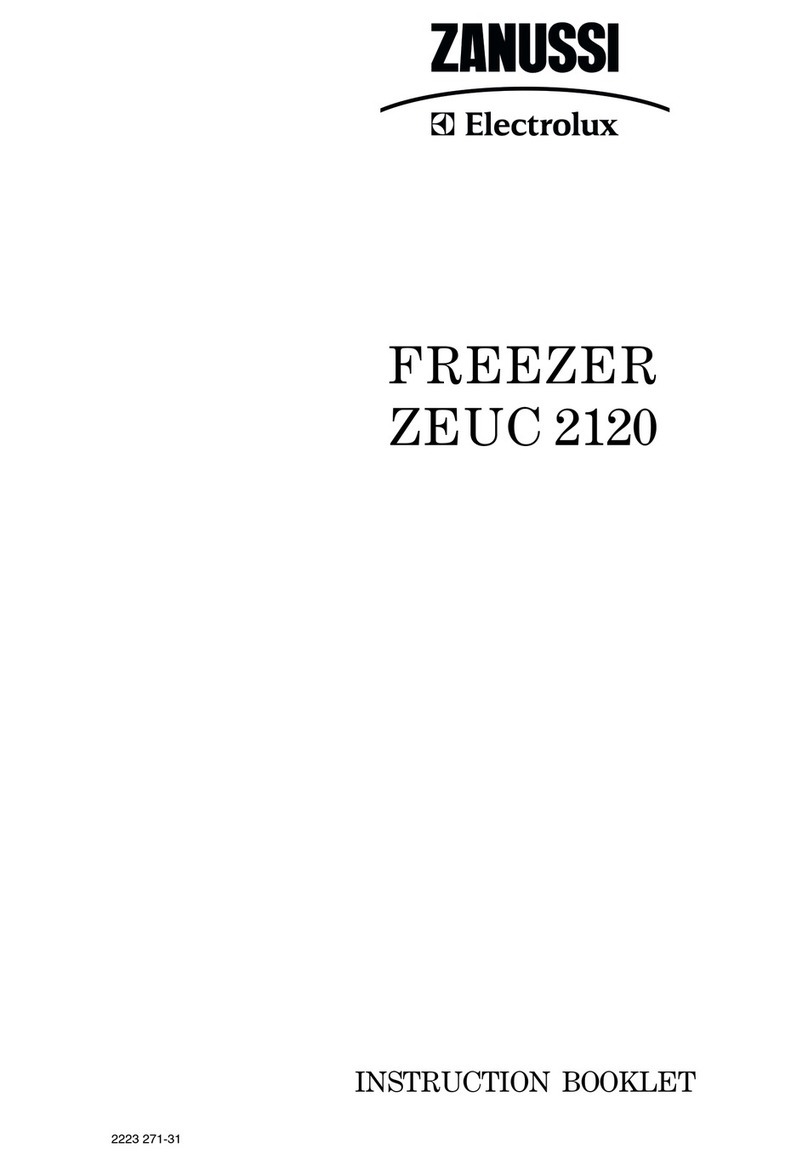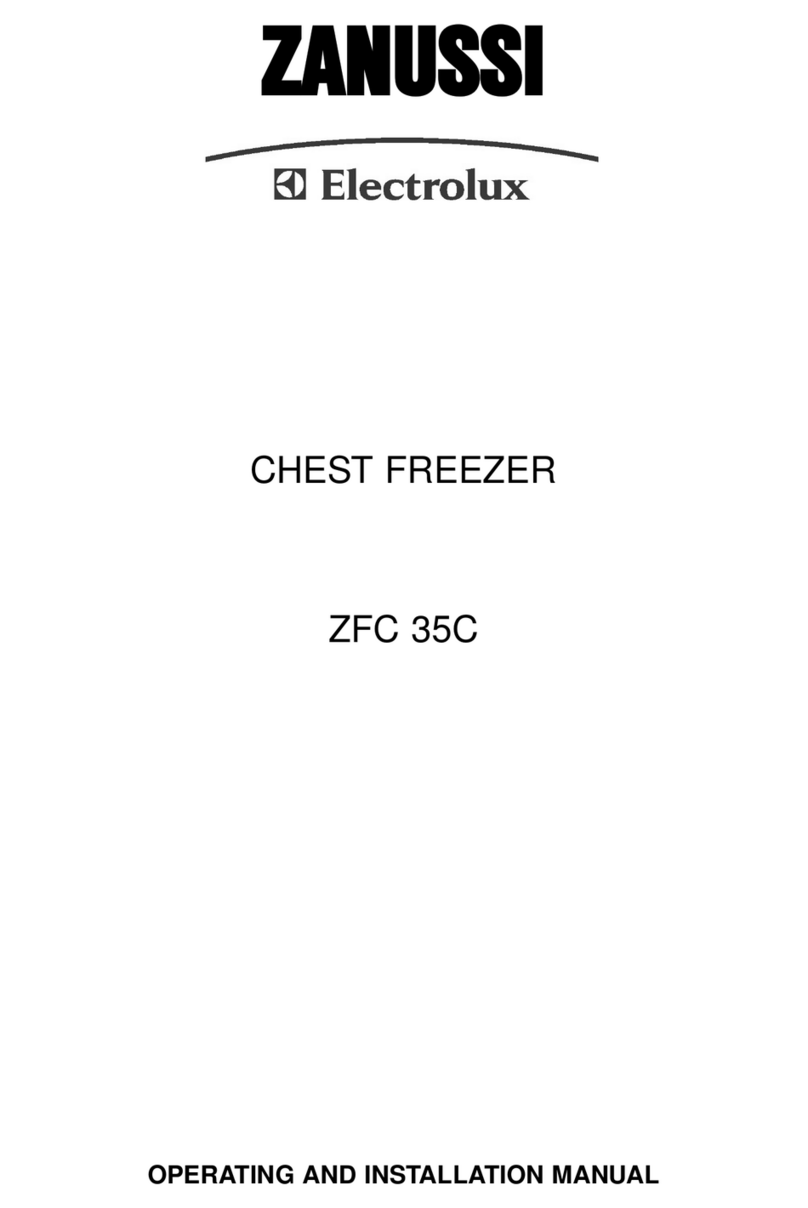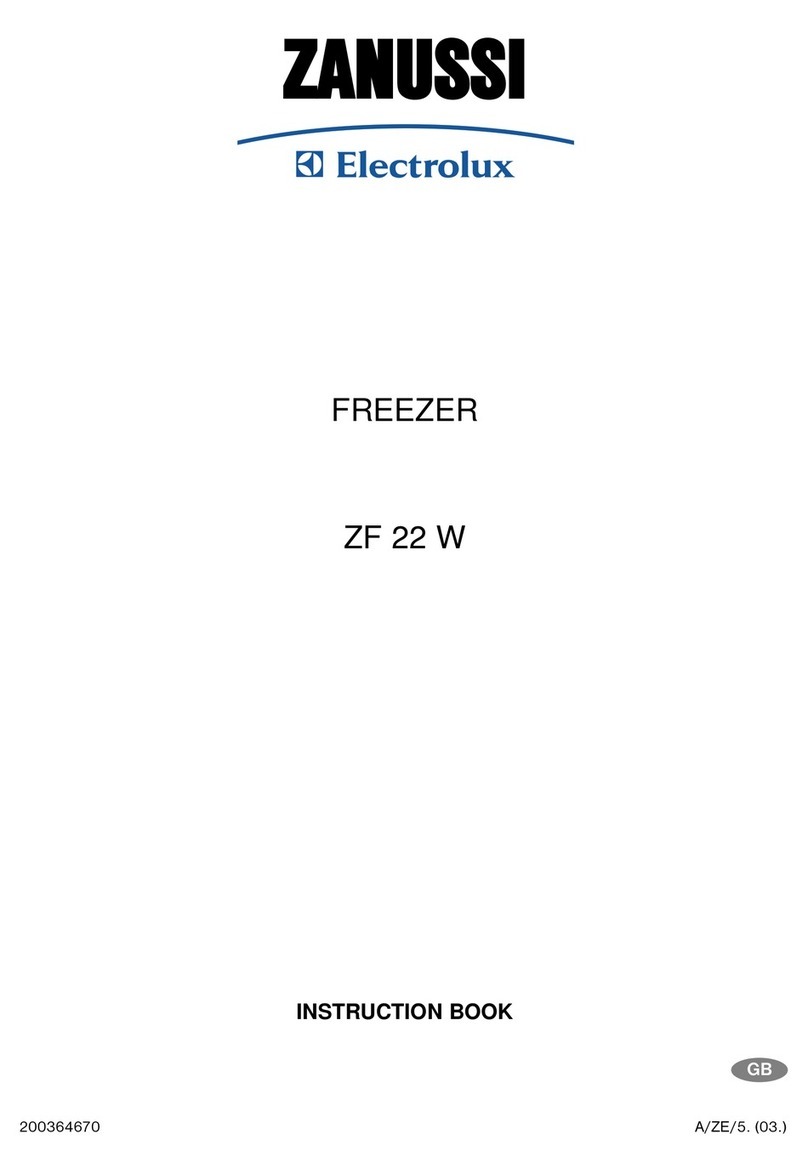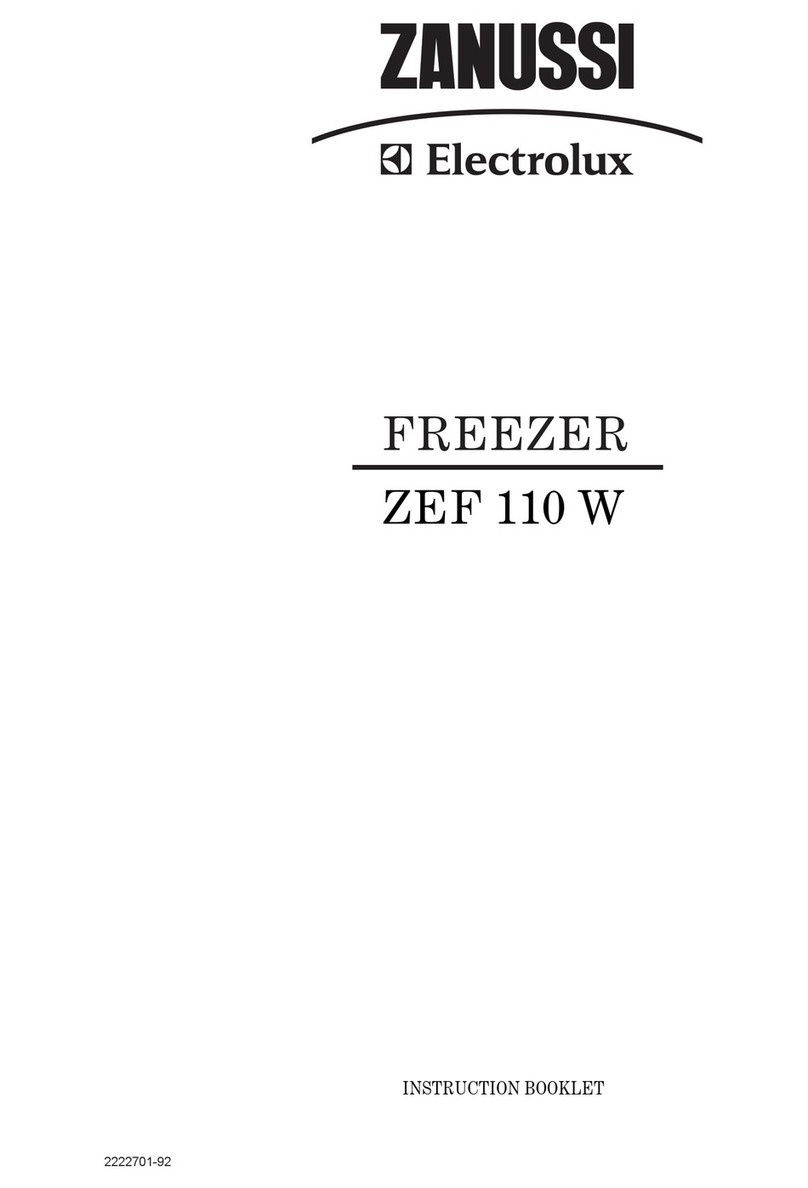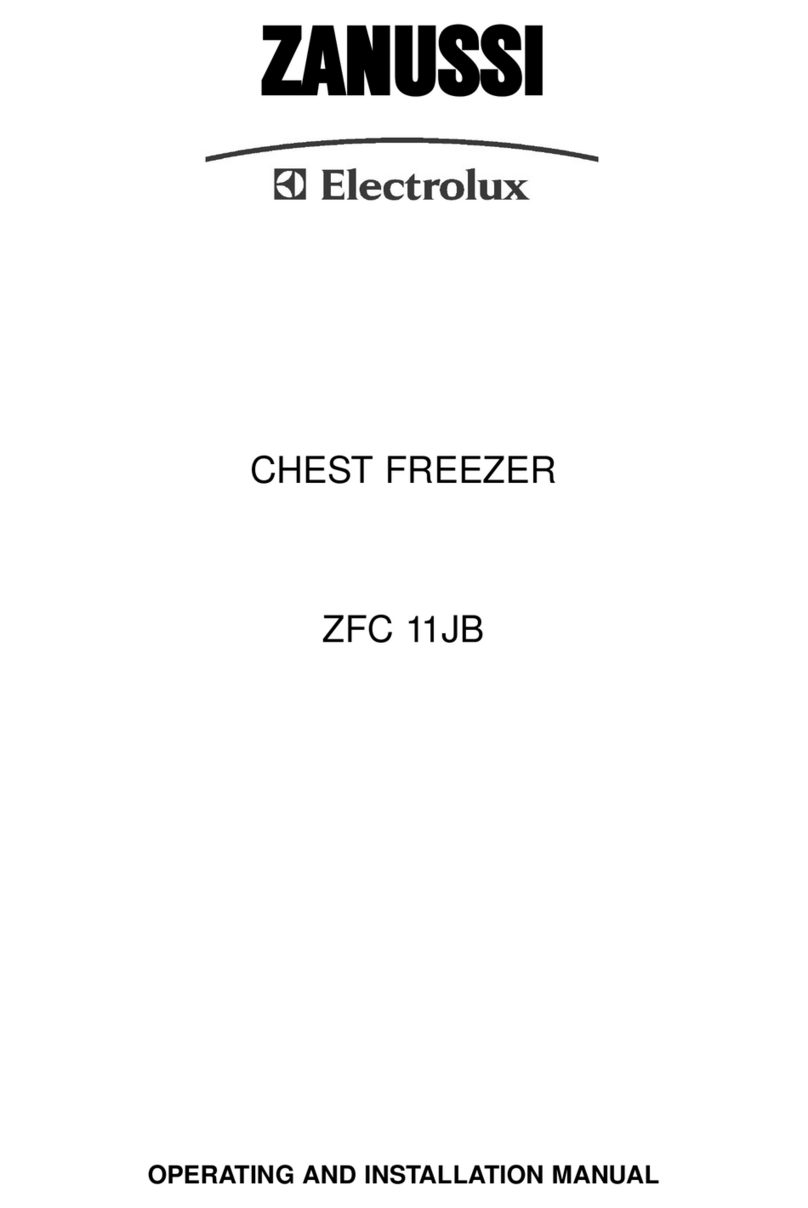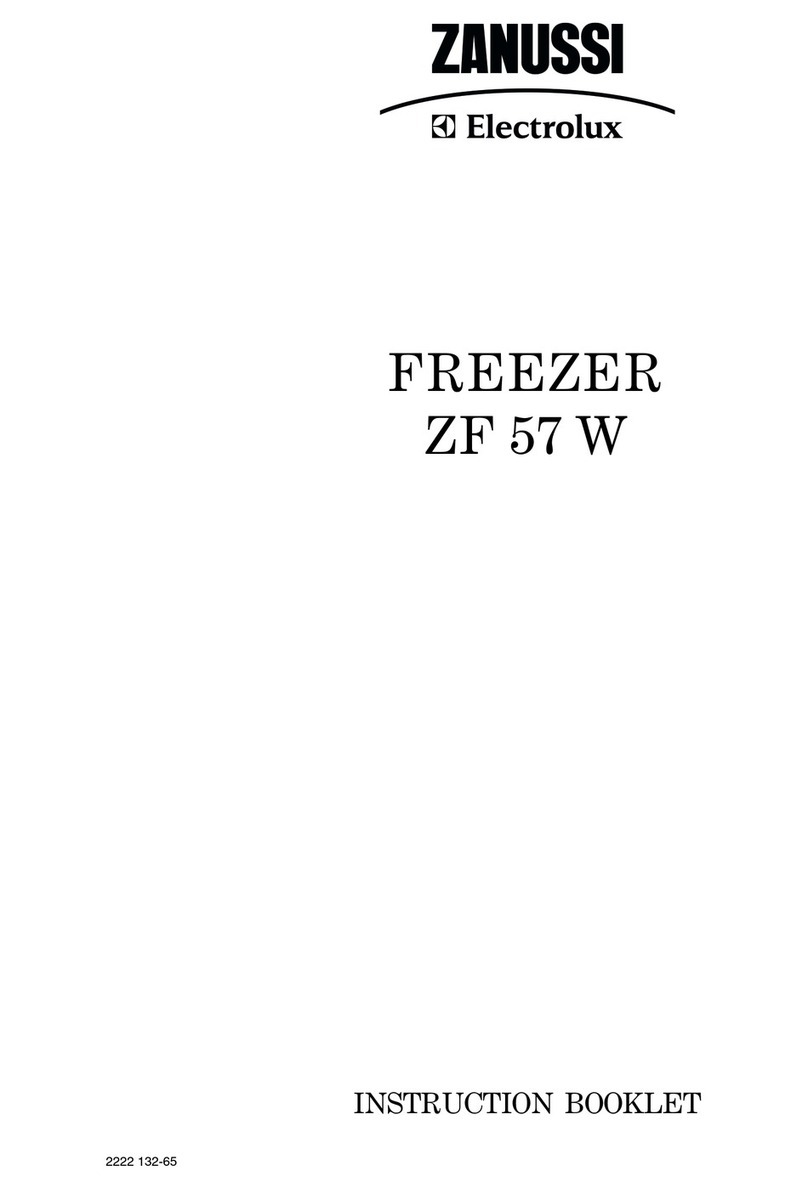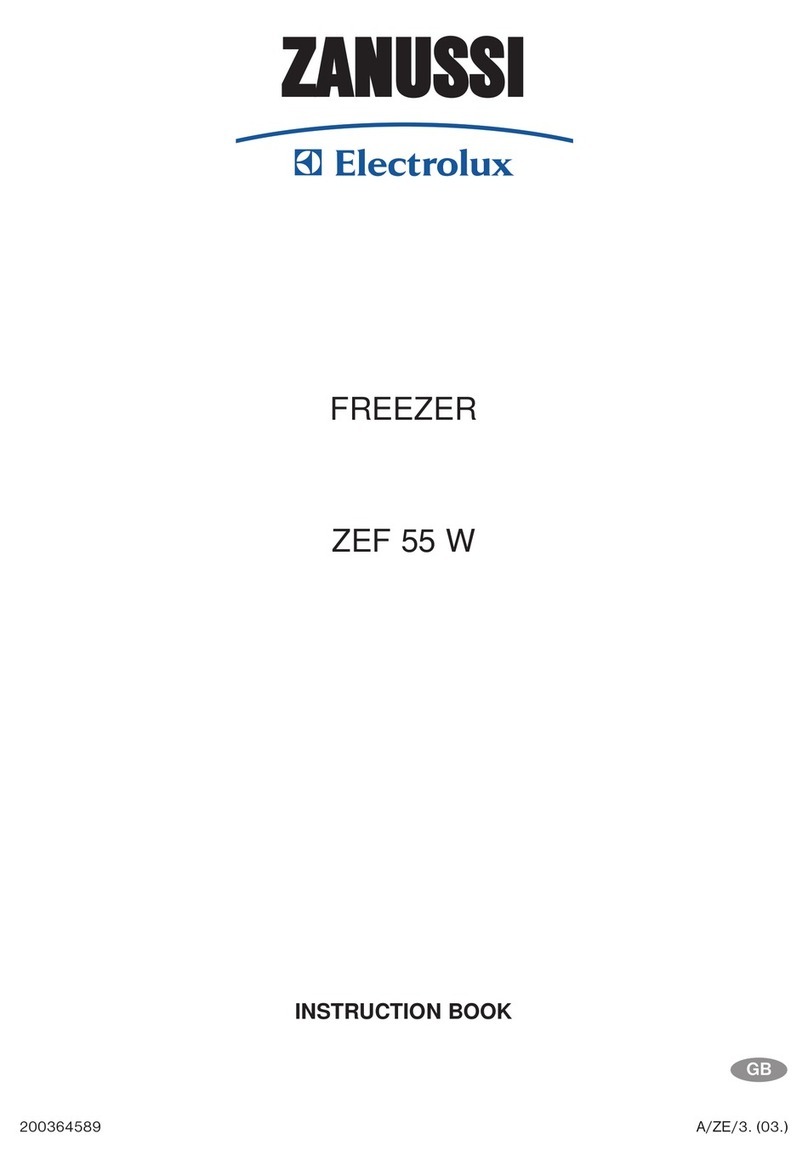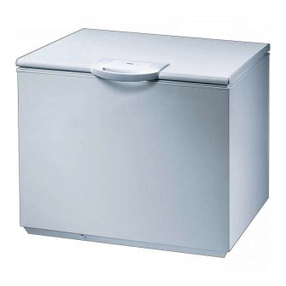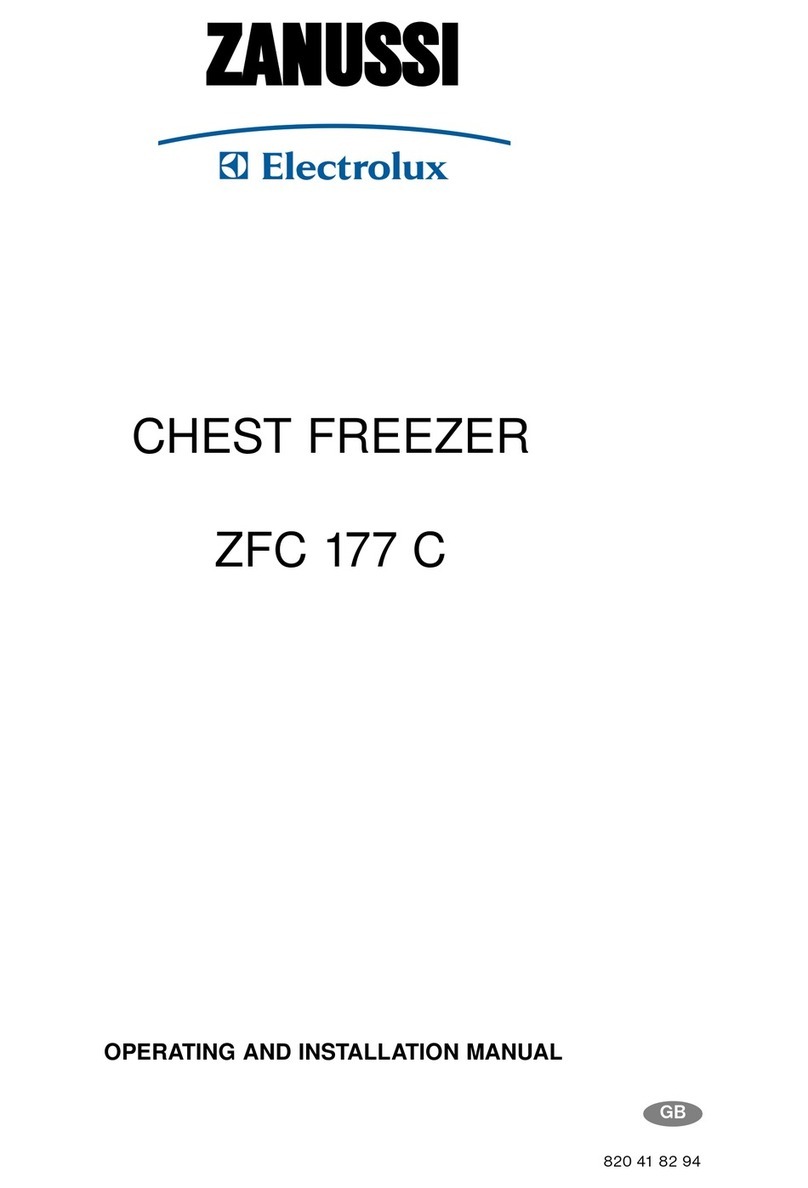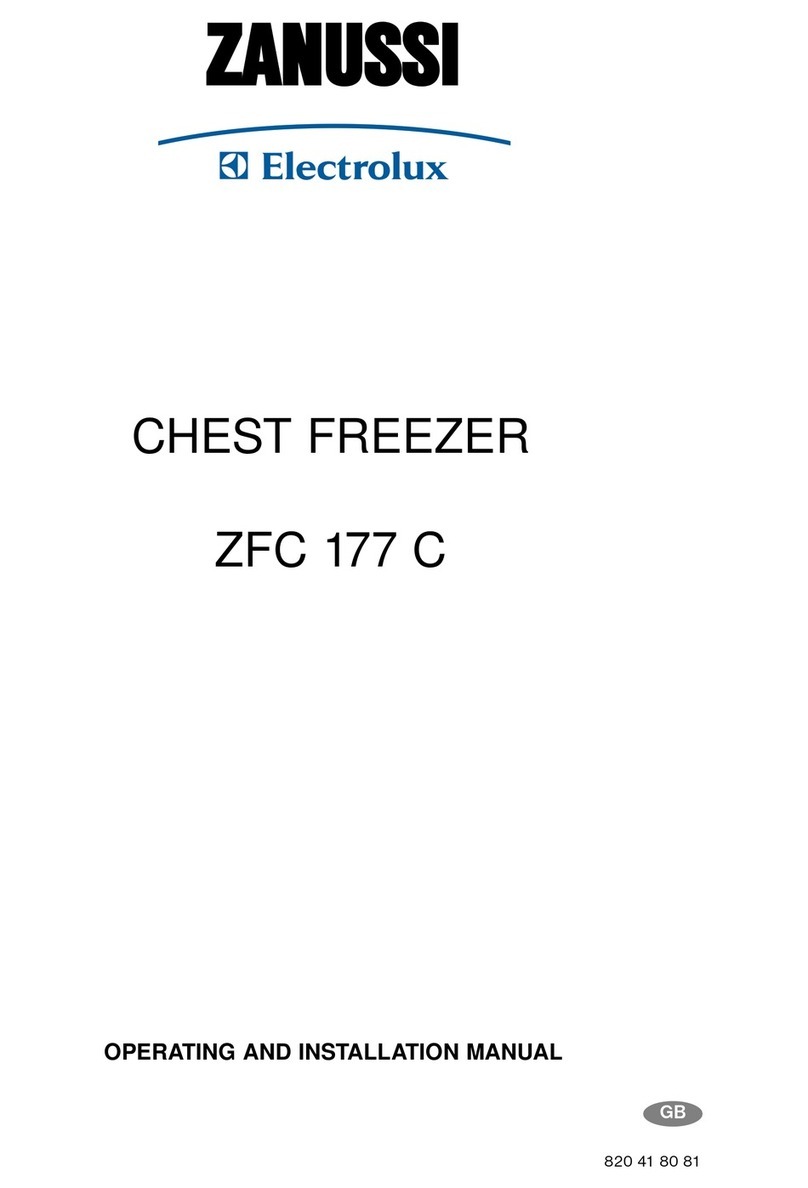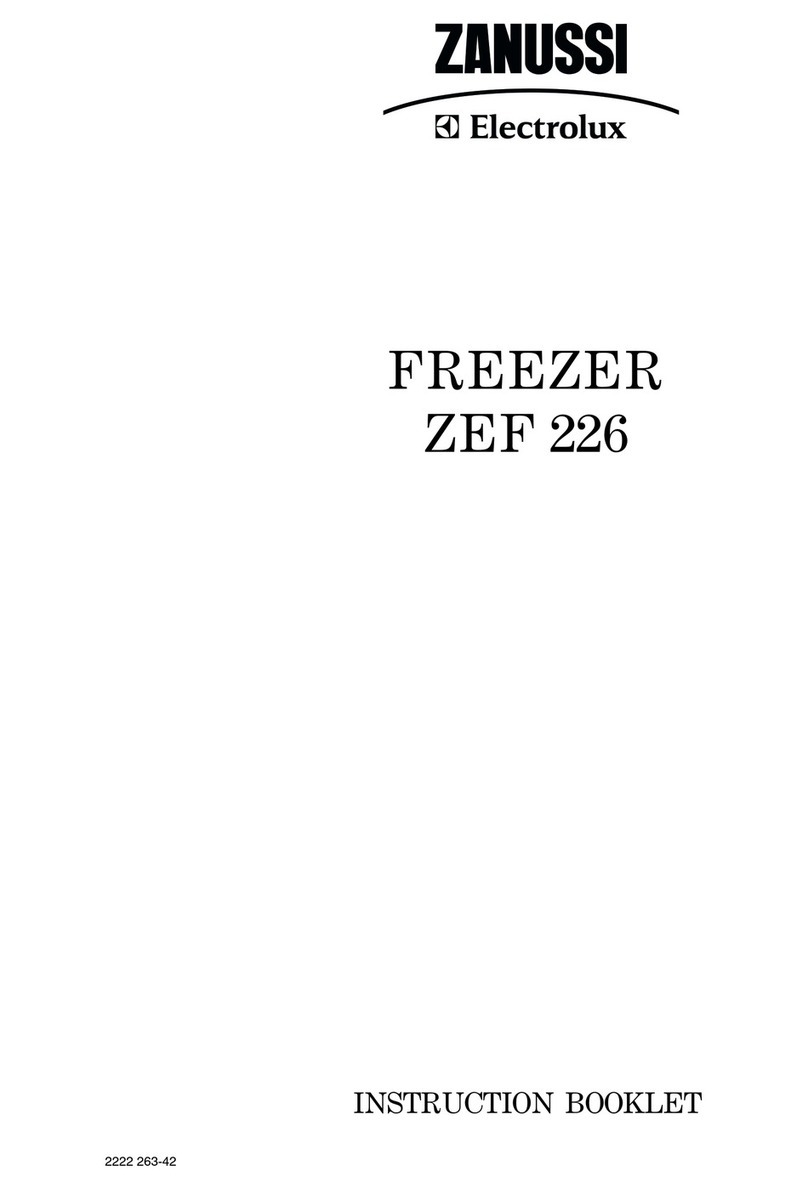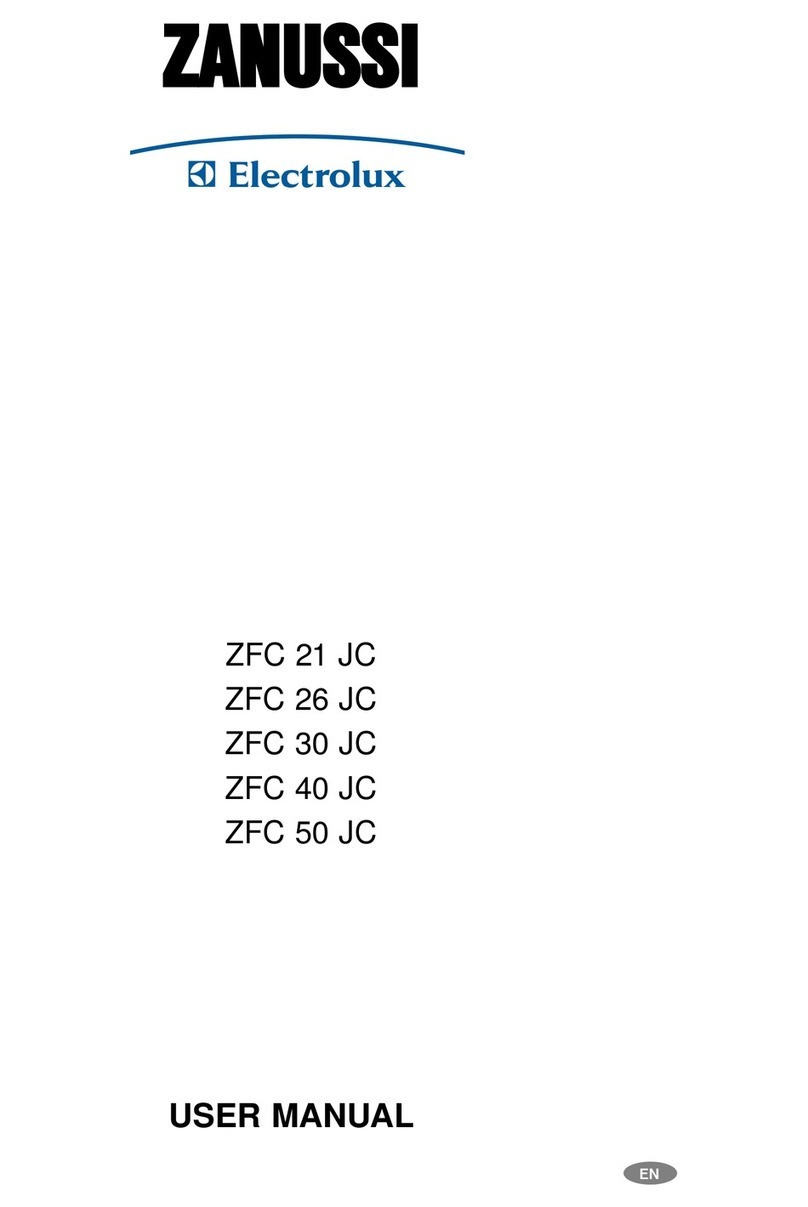43
Im
Impor
port
tant saf
ant safe
et
ty inf
y infor
ormation
mation
General safety precautions
Keep these instructions and they should remain at
the appliance when moving away or changing
owner.
This appliance is designed for storing food,
domestic use and being used according to these
instructions only.
Specialised companies that are qualified to do
so by the manufacturer must carry out service
and repairs including repairing and changing
the power cord Accessory parts supplied by
them should be used only for repairing. Otherwise
the appliance can be damaged or can cause other
damage or injury.
The appliance is out of circuit only in that case if the
plug is removed from the soc et. Before cleaning
and maintenance always unplug it (do not get it by
the cable). If the soc et is difficult to reach, switch
off the appliance by cutting off the current.
Power cord must not be lengthened.
Make sure that the power plug is not squashed
or damaged by the back of the fridge/freezer
-A damaged power plug may overheat and cause a
fire.
Do not place heavy articles or the
fridge/freezer itself on the power cord
-There is a ris of a short circuit and fire.
Do not remove the power cord by pulling on its
lead, particularly when the fridge/freezer is
being pulled out of its niche
-Damage to the cord may cause a short-circuit, fire
and/or electric shoc .
-If the power cord is damaged, it must be replaced
by a certified service agent or qualified service
personnel.
If the power plug socket is loose, do not insert
the power plug
-There is a ris of electric shoc or fire.
When cleaning, defrosting, ta ing out frozen food
or ice tray do not use sharp, pointed or hard
devices, as they can cause damage to the
appliance.
Be careful not to allow liquids to the temperature
control.
Ice and ice-cream can cause hurt if they are eaten
immediately after removal from the frozen food
compartment.
After dissolving frozen food must not be refrozen, it
must be used up as soon as possible.
Store pre-pac ed frozen food in accordance with
the frozen food manufacturer's instructions.
You must not ma e defrosting faster with any
electric heating appliance or chemicals.
Do not put hot pot to the plastic parts of the freezer.
Do not store flammable gas and liquid in the
appliance, because they may explode.
Precautions for child safety
Do not allow children to play with the pac aging
of the appliance. Plastic foil can cause
suffocation.
Adults must handle the appliance. Do not allow
children to play with it or its controlling parts.
If you are discarding the appliance pull the plug
out of the soc et, cut the connection cable (as
close to the appliance as you can) and remove
the door to prevent playing children to suffer
electric shoc or to close themselves into it.
Safety precautions for
installation
Put the appliance to the wall to avoid touching or
catching warm parts (compressor, condenser)
to prevent possible burn.
When moving the appliance ta e care of the plug
not to be in the soc et.
When placing the appliance ta e care not to
stand it on the power cord.
Adequate air circulation should be around the
appliance, lac ing this leads to overheating. To
achieve sufficient ventilation follow the
instructions relevant to installation.
If the appliance is not placed on floor level,
provide appropriate fixing (e. g. using suc ing
dis s).
For the safety of life and property keep
the precautions of these user's
instructions as the manufacturer is not
responsible for damages caused by omission
Safety precautions for
isobutane
Warning
The refrigerant of the appliance is isobutane
(R600a) that is inflammable and explosive to a
greater extent.
Keep ventilation openings, in the appliance
enclosure or in the built-in structure, clear of
obstruction.
Do not use mechanical devices or other means
to accelerate the defrosting process, other than
those recommended by the manufacturer.
Do not damage the refrigerant circuit.
Do not use electrical appliances inside the food
storage compartments of the appliance, unless
they are of the type recommended by the
manufacturer.
GB
Do not store carbonated drin s, bottled drin s
and bottled fruits in the freezer.
